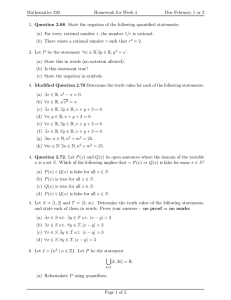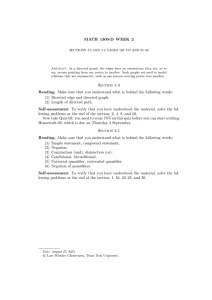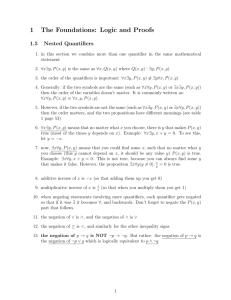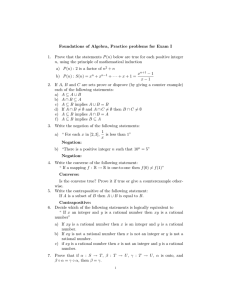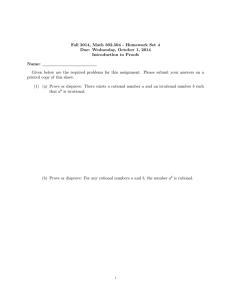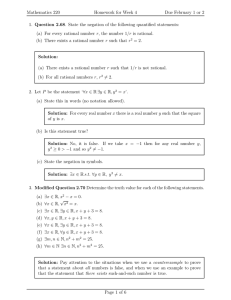Notes on statements with more than one quantifier .
advertisement
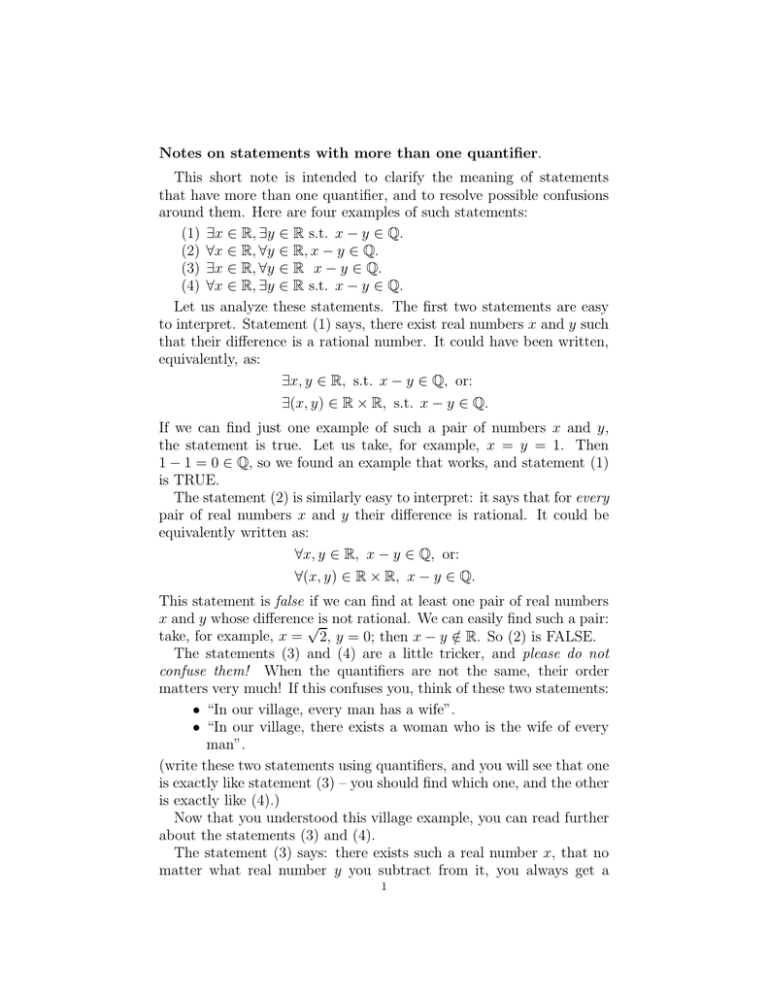
Notes on statements with more than one quantifier. This short note is intended to clarify the meaning of statements that have more than one quantifier, and to resolve possible confusions around them. Here are four examples of such statements: (1) ∃x ∈ R, ∃y ∈ R s.t. x − y ∈ Q. (2) ∀x ∈ R, ∀y ∈ R, x − y ∈ Q. (3) ∃x ∈ R, ∀y ∈ R x − y ∈ Q. (4) ∀x ∈ R, ∃y ∈ R s.t. x − y ∈ Q. Let us analyze these statements. The first two statements are easy to interpret. Statement (1) says, there exist real numbers x and y such that their difference is a rational number. It could have been written, equivalently, as: ∃x, y ∈ R, s.t. x − y ∈ Q, or: ∃(x, y) ∈ R × R, s.t. x − y ∈ Q. If we can find just one example of such a pair of numbers x and y, the statement is true. Let us take, for example, x = y = 1. Then 1 − 1 = 0 ∈ Q, so we found an example that works, and statement (1) is TRUE. The statement (2) is similarly easy to interpret: it says that for every pair of real numbers x and y their difference is rational. It could be equivalently written as: ∀x, y ∈ R, x − y ∈ Q, or: ∀(x, y) ∈ R × R, x − y ∈ Q. This statement is false if we can find at least one pair of real numbers x and y whose difference√is not rational. We can easily find such a pair: take, for example, x = 2, y = 0; then x − y ∈ / R. So (2) is FALSE. The statements (3) and (4) are a little tricker, and please do not confuse them! When the quantifiers are not the same, their order matters very much! If this confuses you, think of these two statements: • “In our village, every man has a wife”. • “In our village, there exists a woman who is the wife of every man”. (write these two statements using quantifiers, and you will see that one is exactly like statement (3) – you should find which one, and the other is exactly like (4).) Now that you understood this village example, you can read further about the statements (3) and (4). The statement (3) says: there exists such a real number x, that no matter what real number y you subtract from it, you always get a 1 2 rational number. Of course such a magical number cannot exist, but how do we prove that this statement is false? Please note that in oder to prove that something does not exist, it is not enough to make an example! Instead, we have to prove that the negation of the statement (3) is false. Here is the negation: ∀x ∈ R, ∃y ∈ R, x − y ∈ / Q. This statement says, given a real number x, there exists a real number y (that can depend on x), such that x − y is not rational. To prove it, we have to give a recipe how to make such a y if you are√given an x. So, for √ every x, let us define y by the formula y = x − 2. Then x − y = 2 is not rational, and so we have proved that the negation of (3) is true, so (3) is FALSE. The statement (4) is an exercise. Hint: it is true; and it is constructed very similarly to the negation of (3). So look at the above paragraph and see what changes you need to make to show that (4) is true.
